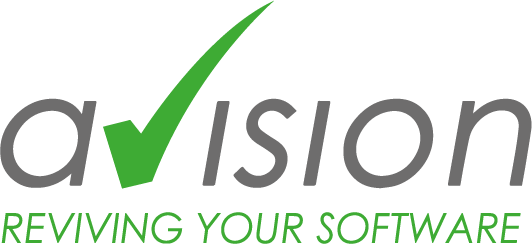Even with limited budgets, companies can breathe new life into their ageing legacy systems. IT service provider Avision, which specializes in software revival, shows how this can be achieved.
In addition to a lack of specialist staff and time, it is primarily tight budgets that prevent IT departments from modernizing their legacy software. There are also risks for business operations, as legacy systems are usually deeply integrated into the company’s processes and workflows. However, simply “business as usual” is not an alternative – outdated software is a grateful target for cyber attacks that exploit security gaps and missing updates. They often also put companies at a competitive disadvantage compared to more flexible, modern systems and require exorbitant maintenance costs in the long term. So modernize if you can – even companies with smaller budgets. Avision presents seven measures that can help:
1. state subsidies. In Germany, a number of subsidies are available at both federal and state level for the modernization of IT systems. The Federal Network Agency, for example, lists the “Funding programmes for your digitalization project”. In addition, companies can apply to the Kreditanstalt für Wiederaufbau (KfW) for special digitization and innovation loans.
2. strategic partnerships. IT service providers often offer tailor-made financing models that enable modernization even with smaller budgets. The providers make advance payments for the modernization and generate their profit through long-term maintenance and support contracts. However, the savings resulting from the use of more efficient technology also contribute to refinancing.
3. refactoring instead of rewriting. The entire code base does not necessarily have to end up on the scrap heap in the course of modernization. It is often more efficient and cost-effective to rewrite only individual sections without changing fundamental functions. Refactoring can reduce maintenance costs and increase performance.
4. iterative modernization. A promising approach for the gradual replacement of legacy software is the so-called strangler pattern. This involves companies developing new functions in more modern systems, which they integrate step by step into the legacy system until it is finally completely replaced.
5. isolation of legacy software. One possible interim solution during parallel new development is to isolate outdated systems and retain only the most essential functions. In this way, the risk of security vulnerabilities can be limited, while companies only have to invest the bare minimum of time and resources.
6. focus on essential software. An automated analysis of the code actually used in production can significantly reduce the size of a legacy system. Optimized in this way, it may be possible to run it on a smaller server or even in the cloud – with lower costs and less maintenance. This also paves the way for complete modernization at a later date.
7. use open source. Open source technologies offer cost-effective alternatives to meet new requirements and save costs at the same time. Many of these tools are easy to integrate and offer modern functions without high investments.
“Modernizing legacy software is a major challenge for companies with tight budgets, but it is possible,” emphasizes Nadine Riederer, CEO of Avision. “The fact is: modernizing your own IT systems is inevitable – and there are numerous ways to achieve this goal. Almost more important than the final costs is therefore the initiative of the companies to make a change and initiate corresponding projects.”
This press release is also available at www.pr-com.de/de/avision.
Press contact
Avision GmbH
Christina Karl
Marketing
Bajuwarenring 14
D-82041 Oberhaching
Phone +49-89-623037-967
christina.karl@avision-it.de
PR-COM GmbH
Melissa Gemmrich
Sendlinger-Tor-Platz 6
D-80336 Munich
Phone +49-89-59997-759
melissa.gemmrich@pr-com.de



